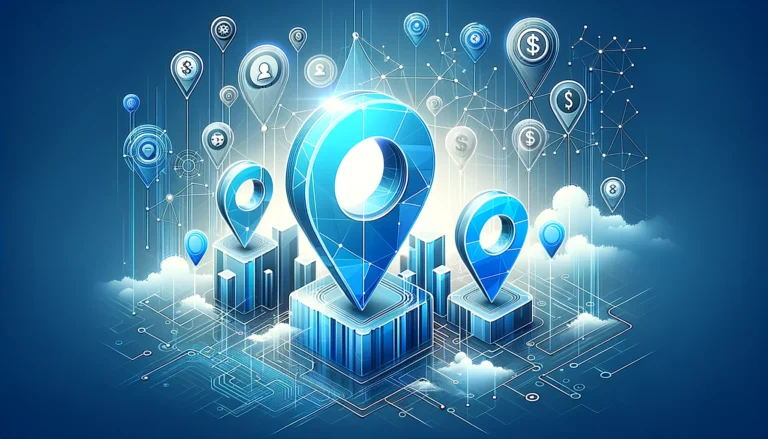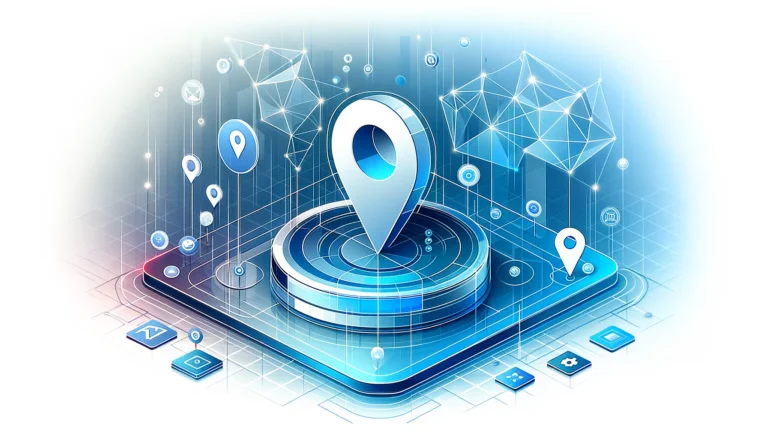Google Maps Directory: How to Find Local Businesses Near You
Finding local businesses used to involve flipping through physical directories or relying on word-of-mouth recommendations. Today, the Google Maps Directory has revolutionized how we discover and interact with businesses in our communities. Whether you’re searching for a cozy café, an emergency plumber, or specialized retail shops, Google Maps puts this information literally at your fingertips.
TL;DR
- Google Maps Directory is more than just navigation—it’s a comprehensive local business discovery platform
- Businesses gain increased visibility, customer engagement, and improved local SEO through proper Google Maps listings
- Users can find nearby businesses using filters, categories, and advanced search techniques
- Business owners should claim and verify listings, maintain accurate information, and actively manage reviews
- Common mistakes include incomplete listings, ignoring customer feedback, and inconsistent business information across the web
Understanding the Google Maps Directory
The Google Maps Directory represents far more than just a digital map or navigation tool. It functions as a comprehensive local business discovery platform that connects consumers with businesses in their vicinity. When someone searches for “coffee shops near me” or “hardware stores in Chicago,” they’re tapping into this powerful directory that catalogues millions of businesses worldwide.
For local businesses, maintaining a presence in online directories has become non-negotiable in today’s digital marketplace. The Google Maps Directory stands at the forefront of these platforms, offering unparalleled reach and functionality. Unlike traditional phone books or printed directories with limited information and reach, Google Maps provides dynamic, interactive listings that include reviews, photos, hours, and direct contact options.
Have you ever considered how dramatically Google Maps has transformed local business discovery? Before its widespread adoption, finding unfamiliar local businesses often involved driving around neighborhoods or relying solely on recommendations. Today, detailed information about virtually any type of business is available instantly, complete with directions, reviews, and even street-level imagery.
How Google Maps Directory Works
Google Maps combines sophisticated mapping technology with a robust business database to create a seamless directory experience. The platform features multiple search capabilities, including text search, voice commands, and visual exploration. Users can view businesses on the map interface or as a list, comparing options based on proximity, ratings, or specific attributes.
Businesses are meticulously categorized within the Google Maps ecosystem according to primary and secondary business types. This categorization enables users to browse by industry (restaurants, retail, services) and discover establishments that meet their specific needs. The system also employs machine learning to understand search intent, delivering increasingly relevant results based on user behavior and preferences.
I recently relocated to a new city and experienced firsthand how powerful the Google Maps Directory can be. Without knowing a single local business, I was able to quickly find everything from reliable mechanics to dentists with excellent reviews, all while understanding exactly how far each option was from my new home. The platform’s ability to filter results by operating hours even helped me find a pharmacy that was open late when I needed medication unexpectedly.
Benefits of Using Google Maps for Local Businesses
One of the most significant advantages for businesses listed in the Google Maps Directory is dramatically increased visibility and reach. When your business appears in local search results, you gain exposure to potential customers actively seeking your products or services. This visibility extends beyond simple address listings to include rich information that can influence purchase decisions.
Google Maps enhances customer engagement through its review and rating system. These customer testimonials create social proof that significantly impacts consumer decisions. According to recent studies, nearly 90% of consumers read reviews before visiting a business, and positive ratings can substantially increase click-through rates to business websites or physical locations.
From an SEO perspective, optimizing your Google Maps presence delivers powerful benefits for overall how to organize active directory for business environment strategies. Google’s algorithms increasingly prioritize local search results, particularly for mobile users. A well-maintained Google Maps listing improves your chances of appearing in the coveted “Local Pack” (the map with three business listings that appears at the top of many local search results), which receives significant user attention and clicks.
Why Local Businesses Need Google Maps
In today’s competitive landscape, businesses gain a distinct advantage through proper Google Maps optimization. When consumers search for products or services “near me,” those businesses with complete, accurate, and engaging listings tend to rise to the top of results. This competitive edge becomes even more crucial as mobile searches with local intent continue to grow year after year.
For small businesses with limited marketing budgets, Google Maps represents an exceptionally cost-effective marketing tool. Creating and maintaining a basic business listing costs nothing, yet provides exposure to thousands of potential customers searching in your area. The platform essentially functions as free advertising that targets users based on proximity and specific needs.
Google Maps also provides real-time updates and accuracy that traditional advertising cannot match. Businesses can adjust hours during holidays, post about special events, and communicate temporary closures—ensuring customers always have current information. This capability reduces frustration from customers arriving at closed locations and helps manage expectations effectively.
How to Use Google Maps to Find Local Businesses
Finding local businesses through Google Maps begins with a straightforward search process. Open the Google Maps application on your mobile device or visit maps.google.com on your computer. In the search bar at the top, enter what you’re looking for—this can be a specific business name or a general category like “Italian restaurants” or “hardware stores.”
If you’re looking for businesses near your current location, simply add “near me” to your search query. Alternatively, you can specify a different location by adding a neighborhood, city, or address to your search (e.g., “coffee shops in Downtown Seattle”). The map will populate with relevant businesses, which you can view either on the map itself or as a list.
To refine your search results, Google Maps offers powerful filtering options. After performing an initial search, look for the “Filters” button (typically appearing below the search bar). Here, you can narrow results based on:
- Hours (currently open, open at specific times)
- Rating (4 stars and above, etc.)
- Price range (indicated by dollar signs)
- Amenities or services (outdoor seating, delivery, wheelchair accessibility)
Once you’ve found businesses that interest you, Google Maps makes it easy to save and share locations. To save a business for future reference, tap on its listing and select the “Save” icon. You can organize saved places into custom lists like “Favorite Restaurants” or “Places to Visit.” Sharing is equally simple—tap the “Share” button on any listing to send the location via text, email, or social media platforms.
Advanced Search Techniques on Google Maps
Voice search capabilities have transformed how we interact with Google Maps. When using the mobile app, tap the microphone icon and speak naturally: “Find coffee shops open now near me” or “Navigate to the highest-rated Italian restaurant in the area.” This hands-free approach is particularly valuable when driving or multitasking.
Location sharing extends Google Maps functionality beyond simple business discovery. By sharing your real-time location with friends or family members, you can coordinate meetups at unfamiliar businesses or track each other’s progress when traveling to the same destination. This feature adds a social dimension to the business discovery process.
Google Maps offers immersive exploration tools through Street View and 360-degree imagery. Before visiting an unfamiliar business, you can virtually “walk around” the area to identify landmarks, check parking availability, or preview the storefront. For businesses that have added interior 360-degree photos, you can even take a virtual tour inside, viewing the ambiance and layout before your visit.
User-generated content significantly enhances the Google Maps experience. Beyond written reviews, users contribute photos of businesses, their products, and services. These candid images often provide more authentic perspectives than professional marketing photos. Questions and answers posted by community members can address specific concerns, while user-added attributes (like whether a restaurant is good for groups) provide nuanced insights that official business descriptions might miss.
Tips for Optimizing Your Business Listing on Google Maps
For business owners, claiming and verifying your Google Maps listing is the essential first step toward optimization. Start by searching for your business on Google Maps—if it appears (even with incomplete information), select “Claim this business” or “Own this business?” If your business doesn’t appear, you’ll need to add it through Google Business Profile (formerly Google My Business).
The verification process typically involves receiving a postcard with a code sent to your business address, though some businesses may qualify for phone or email verification. This crucial step proves you’re the legitimate owner and grants you control over how your business appears in Google Maps and Search.
Completing your profile with accurate, comprehensive information significantly impacts your visibility and customer experience. Focus on these key elements:
- Business name (exactly as it appears on your storefront)
- Complete address with proper formatting
- Phone number and website URL
- Business category (primary and secondary)
- Operating hours (including special holiday hours)
- Products or services offered
- Attributes relevant to your business type (parking availability, accessibility features, payment methods)
Customer reviews require active management for optimal results. Respond to all reviews—both positive and negative—professionally and promptly. Express genuine appreciation for positive feedback and address concerns constructively in negative reviews. Many businesses ways to access business park directory offerings find that their response to criticism matters more to potential customers than the initial complaint.
Best Practices for Google My Business
Regular updates and posts keep your listing fresh and engaging. Use the posts feature to share:
- Special promotions or limited-time offers
- Upcoming events or classes
- New products or services
- Business milestones or achievements
- Seasonal announcements or holiday hours
These posts appear directly on your Google Maps listing and expire after seven days (except for events, which remain visible until the event date), encouraging regular communication with potential customers.
High-quality visual content dramatically increases engagement with your listing. Upload professional photos of your business exterior (including signage), interior spaces, products, and team members. Virtual tours using 360-degree photography create immersive experiences that can significantly increase customer interest. Research indicates listings with photos receive substantially more clicks and generate greater customer interest than those without visual content.
Google provides valuable performance insights through the Analytics section of your Business Profile dashboard. Monitor key metrics including:
- How customers find your listing (search queries used)
- Actions taken (website visits, direction requests, phone calls)
- Photo views compared to competitors
- Customer demographics and peak interaction times
These analytics help refine your strategy by identifying which aspects of your listing drive customer engagement and which areas need improvement.
Avoiding Common Mistakes When Using Google Maps Directory
Inaccurate or incomplete business information represents the most frequent and damaging mistake businesses make with their Google Maps listings. Incorrect addresses lead to frustrated customers unable to find your location. Outdated phone numbers prevent potential customers from reaching you. Missing or inaccurate hours result in people arriving when you’re closed—creating negative experiences that often translate into poor reviews.
Many businesses make the critical error of neglecting customer reviews and feedback. Unanswered reviews—particularly negative ones—signal to potential customers that you’re unresponsive or indifferent to customer experiences. The absence of review responses can be just as damaging as the negative reviews themselves. Regular, thoughtful engagement with customer feedback demonstrates your commitment to service and can often transform negative experiences into positive outcomes.
Not leveraging Google Maps marketing features means missed opportunities for engagement. Many businesses create basic listings but fail to use promotional posts, product catalogs, appointment booking features, or Q&A sections. These underutilized tools can significantly enhance customer experience and conversion rates when properly implemented. Remember that your Google Maps listing often serves as the first impression for potential customers—making it as informative and engaging as possible is well worth the effort.
Common Pitfalls in Local SEO
Duplicate listings and inconsistent NAP (Name, Address, Phone) information create confusion for both search engines and customers. Businesses sometimes inadvertently create multiple listings after changing locations or phone numbers. These duplicates dilute your review strength and can result in customers contacting outdated numbers or visiting previous locations. Conduct regular audits to identify and resolve duplicate listings, and ensure your business information is identical across all online platforms.
Mobile optimization is often overlooked despite its critical importance. Most Google Maps searches occur on mobile devices, yet many businesses fail to optimize their linked websites for mobile users or don’t check how their listing appears on various devices. A seamless transition from Maps to a mobile-friendly website significantly improves conversion rates. Test your business listing and linked website on multiple devices to ensure optimal user experience.
Many businesses focus exclusively on Google while overlooking valuable local citation opportunities. While Google Maps is undoubtedly the dominant platform, white label business directory software solutions and other local business directories still influence your overall local search performance. Consistent information across multiple platforms (Yelp, Yellow Pages, industry-specific directories) strengthens your local SEO profile and improves Google Maps ranking. Consider using citation management tools to maintain consistency across multiple platforms efficiently.
FAQs
How do I use Google Maps to find local businesses?
To find local businesses on Google Maps, open the app or website and enter what you’re looking for in the search bar (e.g., “coffee shops near me” or “plumbers in Boston”). You can refine results using filters for ratings, hours, and more. Tap on any business to see details including address, hours, reviews, and contact information.
What are the benefits of using Google Maps for local businesses?
Google Maps offers businesses increased visibility to local customers, enhanced customer engagement through reviews and photos, improved local search rankings, and valuable insights about customer behavior. It also provides a cost-effective marketing channel and allows real-time updates to business information.
How can I optimize my business listing on Google Maps?
Optimize your listing by claiming and verifying your business, providing complete and accurate information, adding high-quality photos, encouraging customer reviews, responding promptly to all feedback, posting regular updates about special offers or events, and utilizing additional features like appointment booking or product catalogs.
What are common mistakes to avoid when using Google Maps Directory?
Common mistakes include maintaining inaccurate or outdated business information, neglecting to respond to customer reviews, creating duplicate listings, inconsistent business details across online platforms, failing to optimize for mobile users, and not utilizing promotional features like posts and special offers.
How do I improve my local business visibility on Google Maps?
Improve visibility by selecting the most accurate primary and secondary business categories, maintaining complete and updated business information, acquiring positive reviews and responding to all feedback, posting regular updates, adding quality photos, and ensuring consistent business information across all online directories.
Can I promote my business effectively using Google Maps?
Yes, you can effectively promote your business through regular posts about special offers, events, or new products; highlighting positive reviews; adding engaging photos and videos; utilizing the Q&A section to address common customer questions; and maintaining an updated product or service catalog with pricing information.
How accurate are Google Maps business listings?
Google Maps listings are only as accurate as the information provided by business owners and users. Verified listings managed by active owners tend to be highly accurate. Unverified or unclaimed listings may contain outdated or incorrect information. Google uses various verification methods to ensure accuracy, but business owners should regularly audit their listings.
How do reviews impact my business on Google Maps?
Reviews significantly impact your business by influencing consumer decisions, affecting your ranking in local search results, building trust with potential customers, and providing valuable feedback for improvement. Businesses with more positive reviews typically receive more clicks, calls, and visits than competitors with fewer or negative reviews.
What are the best tips for using Google Maps for local SEO?
For optimal local SEO, focus on complete and accurate business information, consistent NAP details across all platforms, regular content updates, keyword optimization in business descriptions, encouraging and responding to reviews, building local citations, creating Google Posts, and utilizing all relevant business attributes and categories.
How can I avoid common mistakes in Google Maps listings?
Avoid common mistakes by regularly auditing your listing for accuracy, managing duplicate listings, maintaining consistent business information across all platforms, actively responding to all reviews (positive and negative), optimizing your listing for mobile users, and fully utilizing available features like posts, photos, and Q&A sections.
Take Your Local Business to New Heights with Google Maps
The Google Maps Directory has fundamentally transformed how customers find and engage with local businesses. By implementing the strategies outlined in this guide, you can dramatically improve your visibility to potential customers actively searching for what you offer. Remember that your Google Maps listing often serves as the crucial first impression that determines whether a customer chooses your business or a competitor’s.
For business owners, the time invested in optimizing your Google Maps presence delivers exceptional returns. Start by claiming and verifying your listing, then gradually implement the additional optimization techniques discussed here. For consumers, mastering advanced search techniques will help you discover the perfect local businesses for your needs, complete with the information required to make confident decisions.
The local business landscape continues to evolve, but Google Maps remains the essential platform connecting businesses with nearby customers. Whether you’re looking to promote your business or find how to search businesses in fslocal directory tips and other directories, the strategies in this guide will help you navigate the digital marketplace more effectively. Remember that consistency, accuracy, and active engagement are the foundational elements of success in the key steps run successful directory website business environment.
Start implementing these techniques today, and watch as your local business visibility—or your ability to find the perfect local businesses—reaches new heights through the power of Google Maps.









